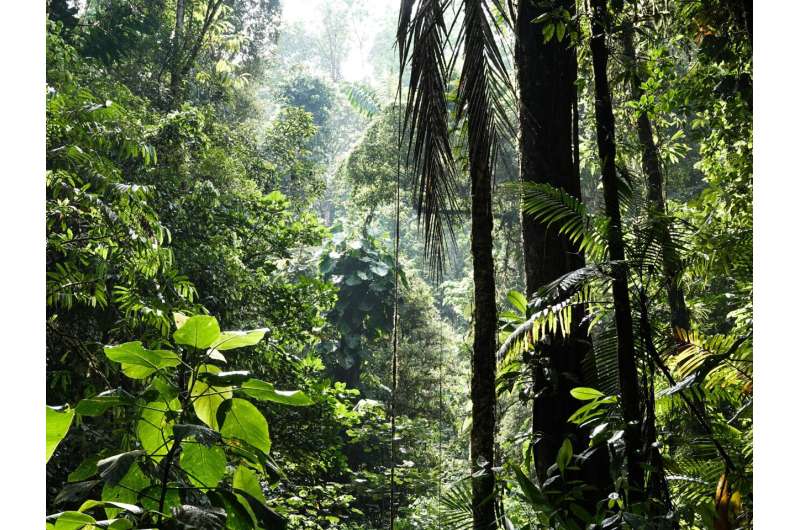Variations in resource partitioning help maintain plant coexistence

Studying plant water use patterns to reveal plant hydrological niches in terrestrial plant communities is regarded as a breakthrough for understanding species combinations. However, how competition and coexistence work remain unanswered.
In a study published in Agricultural and Forest Meteorology, researchers from the Xishuangbanna Tropical Botanical Garden (XTBG) of the Chinese Academy of Sciences and Yunnan Normal University tried to explore the belowground competition dynamics among plant species from pairwise interactions to high-order interactions.
The researchers used stable hydrogen isotopes in plant and soil water to estimate plant water use patterns in six forest communities (including a monocultural rubber plantation, rubber agroforestry systems and more diverse tropical rainforests) across a diversity gradient in Xishuangbanna.
Integrating the spatiotemporal variation information of source water and plant water use, the researchers reconstructed the isotopic signals of plant xylem water of all studied species. They then compared the differences in signals among the coexisting species to study the dynamic differences in plant resource partitioning in the context of belowground competition.
They found that resource partitioning was obvious between deep-resource users and shallow-resource users, but narrower within deep and shallow-resource users. With the increase in species richness, the resource partitioning among all species became stable among species.
Furthermore, plant fitness differences are stabilized by fluctuations in environmental resources, plant resource partitioning across space and time and interspecific interaction complexity. The greater the species diversity and the smaller the resource use advantages among species, the easier it was for the species to achieve "competitive reversals."
"Our study provides a novel method for reconstructing the isotopic signals of plant water use that integrates the spatiotemporal information of water resources and plant interactions and then exhibits the high-resolution dynamics of plant hydrological niche segregation across space and time," said Liu Wenjie of XTBG.
More information: Junen Wu et al, Plant hydrological niches become narrow but stable as the complexity of interspecific competition increases, Agricultural and Forest Meteorology (2022). DOI: 10.1016/j.agrformet.2022.108953
Journal information: Agricultural and Forest Meteorology
Provided by Chinese Academy of Sciences





















